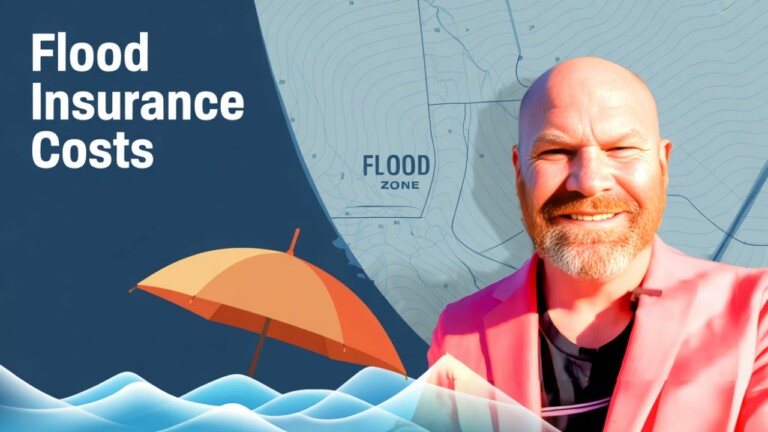5 Critical Questions to Ask Before Buying NFIP Flood Insurance
5 Essential Questions to Ask Before Buying Flood Insurance Through the National Flood Insurance Program
If you’re considering purchasing flood insurance, especially through the National Flood Insurance Program (NFIP), it’s critical to arm yourself with the right knowledge before making a decision. Flood insurance can be confusing, and many homeowners find themselves overwhelmed or misinformed—sometimes paying thousands more than necessary or getting caught in coverage gaps. Having worked in this field for over a decade, I’ve seen firsthand how crucial it is to ask the right questions upfront. Let me walk you through the five most important questions you need to ask before buying NFIP flood insurance to ensure you get the protection your home deserves without any costly surprises.
Understanding Your Flood Zone: Why It Matters More Than Ever
One of the first things you need to know is what flood zone your property is actually in. Flood zones like A, AE, or V are familiar to many homeowners, especially those with mortgages in flood-prone areas where insurance is required. I once bought a house in a high-risk flood zone and was given the wrong flood zone designation, which ended up costing me thousands of dollars in premiums and affecting my property value negatively.
While flood zones used to be the primary factor in determining flood insurance premiums, the National Flood Insurance Program has shifted away from relying solely on these zones for rate calculations. Since the introduction of Risk Rating 2.0, NFIP now uses more detailed risk factors rather than just flood zone maps to set your premiums. However, flood zones still influence property values and insurance requirements, so knowing your exact flood zone remains essential.
Imagine your neighbor’s house is in a zone where flood insurance isn’t required, but yours is. That difference can affect the resale value of your home significantly. To avoid surprises, use an accurate flood zone tool to identify your zone precisely. This is the foundation for understanding your flood risk and insurance needs.
What Does Your NFIP Flood Insurance Actually Cover?
Another common area of confusion is what exactly is covered by your flood insurance policy. NFIP policies are divided into two main types of coverage: building coverage and contents coverage. Understanding these can help you avoid costly misunderstandings about what will be reimbursed in the event of a flood.
Building Coverage
Think of building coverage as protection for everything physically attached to your home. This includes structural components like walls, floors, and foundations, but also certain appliances and fixtures on the main level of your house. These could be your refrigerator, dishwasher, countertops, furnace, air conditioner, and cabinets. However, items in your basement usually have limited coverage, especially if your basement is below grade on all four sides.
Contents Coverage
Contents coverage protects your personal belongings, such as furniture, electronics, clothing, and other movable property. However, it’s important to note that coverage for contents in basements under NFIP policies is very limited. Typically, only a freezer or refrigerator in a basement might be covered, and other items stored there may not be.
The NFIP offers up to $250,000 in building coverage and $100,000 in contents coverage. Knowing these limits and what is included under each category can help you decide if you need additional private flood insurance or endorsements to cover gaps in your policy.
Do You Need an Elevation Certificate? How It Can Save You Money
Elevation certificates have long been a key document in flood insurance, but their role is evolving with the NFIP’s Risk Rating 2.0 changes. Many homeowners wonder whether they need one and if it will save them money on premiums.
Currently, elevation certificates are not required by the NFIP to get a flood insurance policy, thanks to improvements in FEMA’s data and rating methodology. However, elevation certificates can still be incredibly valuable because they provide the most accurate, property-specific data about your home’s elevation relative to the floodplain.
Having an elevation certificate can lead to significant premium savings, especially if your home sits higher than the base flood elevation. Even if you purchase your policy without one, you can still submit an elevation certificate later—up to six months after policy purchase—and NFIP can retroactively adjust your premium. This can mean thousands of dollars in savings over time.
How Does Risk Rating 2.0 Impact Your Flood Insurance Premiums?
The National Flood Insurance Program’s Risk Rating 2.0 is a major update that changed how premiums are calculated. Instead of relying primarily on flood zones, NFIP now assesses multiple factors that more accurately reflect your home’s flood risk.
Some of the key factors influencing your premiums under Risk Rating 2.0 include:
- Distance to water: Properties closer to rivers, lakes, or the coast may have higher premiums.
- Type of flooding: River flooding, coastal flooding, or other types can affect rates differently.
- Elevation: How far your home is elevated above the flood level.
- Replacement cost: The value to rebuild your home, not just market value.
- Flood loss history: Previous flood claims can increase premiums.
For example, if your home is located near a river, your premium will be calculated differently than if you were in a coastal area. It’s crucial to ask your insurance agent to explain how Risk Rating 2.0 affects your specific premium and what factors are included in your risk profile.
Some of these factors are within your control, such as elevating your home or mitigating flood risks, while others are not. Understanding this can help you make informed decisions about flood insurance and potential mitigation efforts.
Can Your Flood Insurance Policy Be Transferred to the Next Owner?
When selling your home, an important question is whether your NFIP flood insurance policy can be transferred to the new owner. The good news is that most National Flood Insurance Program policies are transferable, a process known as a policy assumption.
Transferring a flood insurance policy can be a significant advantage for the buyer because it often means they can maintain favorable premium rates, especially if the policy is part of the Glide Path program. This program gradually increases premiums over time instead of imposing large jumps all at once. Keeping this policy in place can save the new homeowner thousands of dollars.
Typically, transferring a policy requires signatures from both the buyer and seller, some mortgage information, and can be completed within 5 to 7 days. It’s a straightforward process, but you should always talk to your insurance agent to ensure everything is handled properly during a sale.
How to Get the Right Flood Insurance Quote in 3 Simple Steps
After understanding these five critical questions, you might be wondering how to move forward with getting the right flood insurance policy. Here’s a simple three-step process to get started:
- Fill out the form on a trusted flood insurance website: Provide essential details about your property and flood risk.
- Connect with a flood insurance specialist: A knowledgeable agent will help you understand your coverage options and answer any questions.
- Finalize your policy: Review and sign your flood insurance policy to ensure you have the right protection.
Flood insurance is all we do, and we take it seriously because we understand how costly mistakes can be. Overpaying for flood insurance or being placed in the wrong flood zone is a common problem that can be avoided with the right guidance.
Final Thoughts: Protect Your Home and Wallet with the Right NFIP Flood Insurance
Flood insurance can be complicated, but it doesn’t have to be overwhelming. By asking the right questions before purchasing a policy through the National Flood Insurance Program, you can avoid costly mistakes and ensure your home is properly protected.
Remember to confirm your flood zone, understand your building and contents coverage, consider the benefits of an elevation certificate, learn how Risk Rating 2.0 affects your premiums, and find out if your policy can be transferred if you sell your home. These five questions are key to making an informed decision that protects both your property and your finances.
If you’re ready to take the next step, reach out to a flood insurance expert who can guide you through the process with confidence. Your home is likely one of your biggest investments—make sure you’re not leaving it vulnerable to flood damage or overpaying for coverage.
Flood insurance matters, and with the right knowledge, you can navigate the National Flood Insurance Program with ease and peace of mind.

Information contained on this page is provided by an independent third-party content provider. This website make no warranties or representations in connection therewith. If you are affiliated with this page and would like it removed please contact editor @producerpress.com







